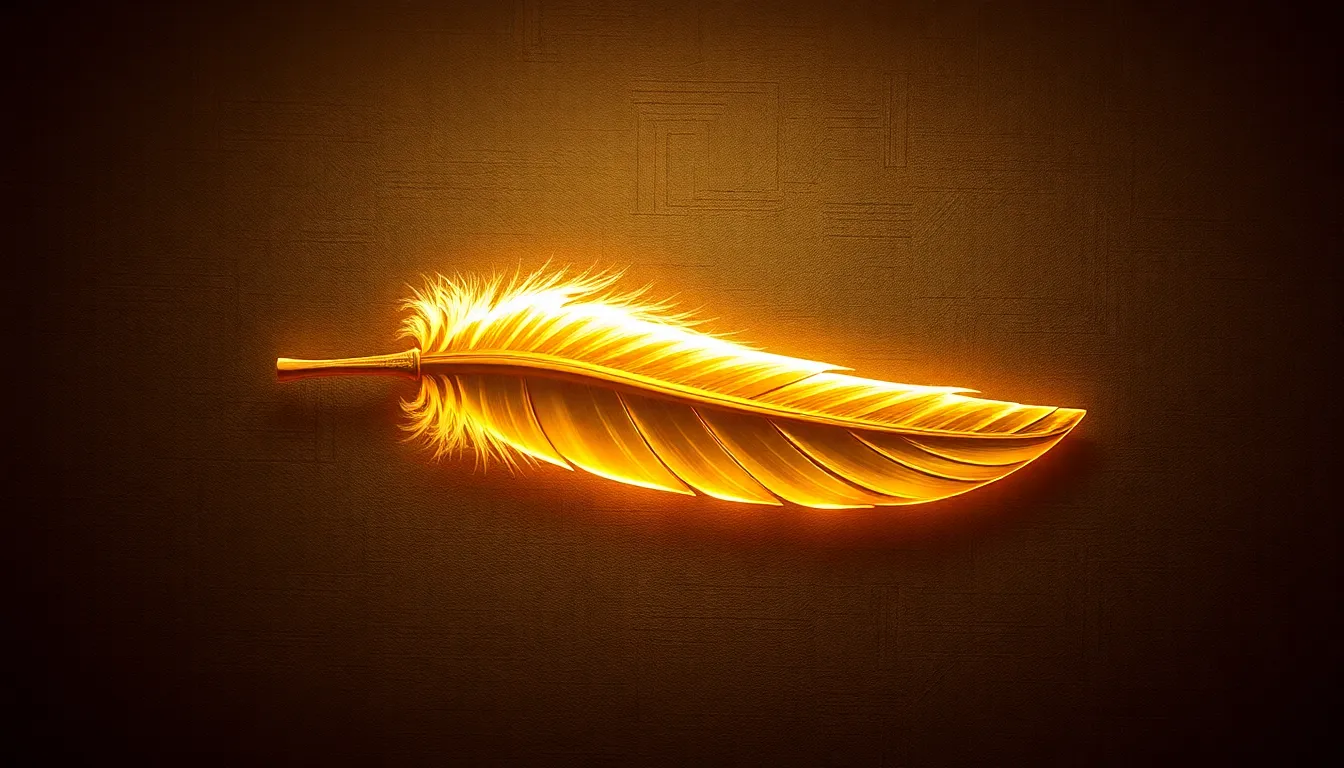The Legend of the Feather of Ma’at: Truth and Justice in Ancient Egypt
I. Introduction
The Feather of Ma’at holds a pivotal place in Ancient Egyptian mythology, symbolizing the core values of truth and justice. This legendary feather, belonging to the goddess Ma’at, represents not just a physical object but an essential concept that guided the moral and ethical framework of Ancient Egyptian society.
In a culture where the divine and the mortal intertwined, the principles of truth and justice were paramount. The Feather of Ma’at was central to the belief system that governed both individual conduct and societal norms. This article aims to explore the multifaceted significance of the Feather of Ma’at, its implications for Ancient Egyptian culture, and its lasting legacy in contemporary discussions of justice.
II. The Concept of Ma’at
Ma’at is a fundamental concept in Ancient Egyptian belief, encompassing the ideas of truth, balance, order, and justice. The word “Ma’at” itself translates to “truth” or “order,” illustrating its significance in maintaining cosmic and societal equilibrium.
Ma’at was more than just a goddess; she represented a principle that governed the universe. Her presence ensured that chaos (Isfet) was kept at bay, allowing for a structured and harmonious existence. In Egyptian cosmology, Ma’at was essential for the creation and sustenance of the world, embodying the laws of nature and human conduct.
III. The Feather of Ma’at: Symbolism and Meaning
The Feather of Ma’at is depicted as an ostrich feather, characterized by its lightness and purity. This feather serves as a powerful symbol of truth and justice, embodying the idea that one’s actions must be weighed against the principles of Ma’at.
- Symbolism of Truth: The feather represents the truthfulness of one’s heart and actions.
- Justice Representation: It signifies the balance necessary for fair judgment.
- Divine Balance: The feather is a reminder of the delicate balance between good and evil, order and chaos.
IV. The Weighing of the Heart Ceremony
Central to the Ancient Egyptian belief in the afterlife was the Weighing of the Heart ceremony, which determined the fate of the deceased. This ritual emphasized the importance of Ma’at in both life and death.
During this ceremony, the heart of the deceased was placed on one side of a scale, while the Feather of Ma’at was placed on the other. The outcome of this weighing process determined whether the individual would be granted eternal life or face annihilation.
- Afterlife Beliefs: The Egyptians believed that a virtuous life led to a favorable judgment in the afterlife.
- Weighing Process: If the heart balanced with the feather, the soul was deemed worthy; if not, the heart was devoured by Ammit, the soul-eater.
- Judgment Significance: This judgment served as a moral compass for individuals, encouraging them to live in accordance with Ma’at.
V. Ma’at in Daily Life and Governance
The influence of Ma’at extended far beyond religious practices; it permeated the laws and norms of Ancient Egyptian society. The concept was integral to the governance and ethical standards of the time.
- Influence on Laws: Laws were established to uphold the principles of truth and justice, with Ma’at serving as the guiding philosophy.
- Pharaohs as Embodiments: Pharaohs were considered the living embodiment of Ma’at, responsible for maintaining order and justice.
- Examples of Justice: Cases of dispute were settled based on Ma’at’s principles, ensuring fairness and equity.
VI. Myths and Stories Surrounding Ma’at
Numerous myths involve Ma’at and her feather, illustrating her significance in the Ancient Egyptian belief system. These stories not only entertained but also imparted moral lessons.
- Key Myths: Tales of the goddess’ role in the creation and her interactions with other deities highlight her importance.
- Impact on Beliefs: These narratives reinforced the necessity of living a life aligned with truth and justice.
- Lessons Learned: One notable lesson is the importance of personal integrity and the inevitable consequences of one’s actions.
VII. Legacy of Ma’at in Modern Context
The legacy of Ma’at continues to resonate in contemporary society, influencing modern concepts of justice and ethics. The ideals of truth and justice, embodied by the Feather of Ma’at, remain relevant in today’s legal and moral landscapes.
- Contemporary Influence: Many legal systems incorporate principles reminiscent of Ma’at, promoting fairness and equality.
- Relevance in Discussions: The concept of Ma’at is often invoked in debates on justice, ethics, and governance.
- Cultural References: Ma’at is referenced in various forms of literature and art, symbolizing the enduring quest for truth and justice.
VIII. Conclusion
The Feather of Ma’at encapsulates the essence of truth and justice in Ancient Egyptian culture, serving as a guiding principle for both individuals and society. Its significance extends beyond mythology, influencing the moral and ethical frameworks that govern human behavior.
As we reflect on the enduring legacy of Ma’at, it becomes clear that the pursuit of truth and justice remains a fundamental aspect of human society. The lessons imparted by Ma’at continue to inspire us to strive for balance and integrity in our lives, making her teachings as relevant today as they were in Ancient Egypt.




